#amazon basin
Explore tagged Tumblr posts
Text
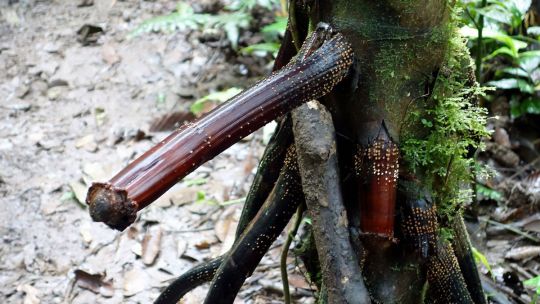
Iriartea deltoidea in the Amazon basin in Ecuador.
(Image credit: geneward2 via Getty Images)
1K notes
·
View notes
Text

Lake Sandoval, Puerto Maldonado, Peru: Lake Sandoval is a lake in Peru, close to the city of Puerto Maldonado, part of the Madre de Dios in the Amazon basin. There is a touristic hike from the river Madre de Dios to the lake. On the way if you're lucky, you might see parrots, macaws and some other species from the rain forest. Wikipedia
#Lago Sandoval#Lake Sandoval#Puerto Maldonado#Peru#Madre de Dios Region#Peruvian Rainforest#Amazon basin#The protected reserved zone Tambopata#south america#South America
117 notes
·
View notes
Text

Anaconda, Queen of the Amazon.
#vintage illustration#snakes#anaconda#the amazon#south america#jungles#south american jungle#amazon basin#amazon river#eunectes murinus#herpetology#biology#zoology
29 notes
·
View notes
Text
Ancient Rock Art May Depict Shamanic Music
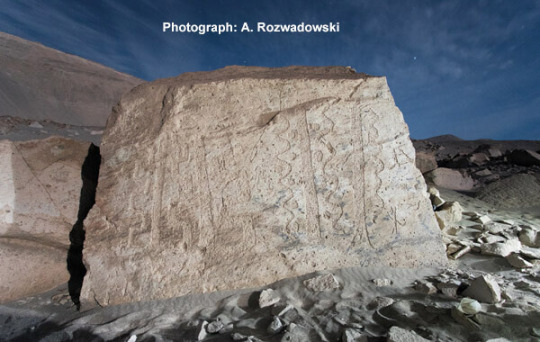
More than 2,000 years ago, the Tukano people of the Colombian Amazon may have documented the soundtracks to their hallucinogenic experiences in petroglyphs on volcanic boulders. Consisting of what appears to be dancing human figures surrounded by zigzagging lines and other geometric forms, the enigmatic art eludes concrete interpretation, although a new analysis suggests that these abstract shapes may depict the songs that transported participants to other dimensions during Ayahuasca ceremonies. The pre-Columbian designs can be found at Toro Muerto, which contains one of the richest collections of rock art in South America. A desert gorge, the site is strewn with thousands of boulders, some 2,600 of which feature ancient carvings.
Describing the drawings in a new study published in the Cambridge Archaeological Journal, researchers explain that the artworks contain "an almost overwhelming repetition of images of dancing human figures (known as danzantes), unique in the region, and an extraordinary accumulation of geometric patterns, most often in the form of vertical zigzag, straight and sinuous lines varying in width, sometimes with accompanying dots or circles." Previous attempts to interpret these zigzags have suggested that they may represent snakes, lightning, or water, although the study authors believe they may have an alternative meaning.
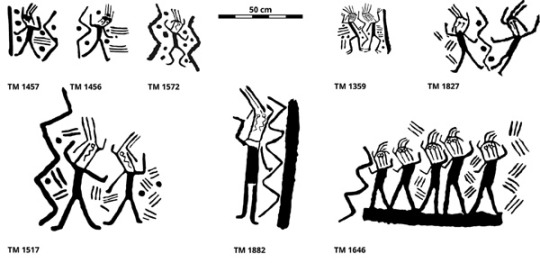
Examples of "danzantes" at Toro Muerto. Image credit: Tracings: Polish-Peruvian research team, compiled by J.Z. Wołoszyn/Cambridge Archaeological Journal/2024 (CC BY 4.0)
To build their hypothesis, the researchers point out the striking similarities between the drawings at Toro Muerto and the traditional artwork of the Tukano culture in the Colombian Amazon. In the case of the latter, geometric designs have been linked to the visions induced by the hallucinogenic brew Ayahuasca, which has been ritually ingested by Indigenous Amazonian communities for millennia. According to the Tukano these drawings were 'yajé images', meaning that they showed patterns they had seen while in an altered state of consciousness induced by consuming entheogens. Concentric circles, dots, wavy lines, zigzags and crenellation motifs dominated among them.
Anthropological analyses of these rituals have repeatedly highlighted the importance of music, with songs known as icaros being sung by shamans as a means of communicating with the gods and journeying through the spiritual cosmos. Ritual in many human cultures involves music; it is a key social technology for building and sustaining community. Ritual music is a universal way to address the spirit world and provide some kind of fundamental change in an individual's consciousness or in the ambience of a gathering. Experiences of ego loss and trance are important for integrating the individual into the group and maintaining community, and music is a significant element of such ritual activity.
Intriguingly, studies into the significance of zigzags in Tukano artwork have revealed that "the Tukano saw in them the representations of songs which were an integral part of the ritual, having also agentive power, and constituting a medium for transfer to the mythical time of the beginning." In other words, within a Tukano context, these shapes depict the shamanic music that mesmerizes ritual participants under the effects of Ayahuasca, delivering them to an alternate reality in which they are able to reconnect to their ancestral mythology.
Admitting that their theory is somewhat speculative, the researchers nonetheless conclude that these pre-Hispanic drawings "illustrated a graphically elusive sphere of culture: singing and songs. The interpretation we propose is of course hypothetical, but the conclusions it leads to constitute a logically coherent counter-proposal to previous interpretations of some of the Toro Muerto petroglyphs. We suggest that zigzag lines could be representations of songs, which seems particularly intriguing given the repeated juxtaposition of these patterns with the figures of dancers at Toro Muerto, not only in the more complex compositions but also in the less complex as well."
#archaeology#petroglyphs#shamanic practice#shamanism#shamanic journey#shamans#ayahuasca#ayahuasca art#amazon basin#anthropology
11 notes
·
View notes
Text
Excerpt from this story from Mongabay Environmental News:
A NASA study analyzed the future action of six climate variables in all the world’s regions — air temperature, precipitation, relative humidity, short- and long wave solar radiation and wind speed — if Earth’s average temperature reaches 2° Celsius (3.6° Fahrenheit) above preindustrial levels, which could occur by 2040 if emissions keep rising at current rates.
The authors used advanced statistical techniques to downscale climate models at a resolution eight times greater than most previous models. This allows for identification of climate variations on a daily basis across the world, something essential since climate impacts unfold gradually, rather than as upheavals.
The study found that the Amazon will be the area with the greatest reduction in relative humidity. An analysis by the Brazilian space agency INPE showed that some parts of this rainforest biome have already reached maximum temperatures of more than 3°C (5.4°F) over 1960 levels.
Regardless of warnings from science and Indigenous peoples of the existential threat posed by climate change, the world’s largest fossil fuel producers, largely with government consent, plan to further expand fossil fuel exploration, says a U.N. report. That’s despite a COP28 climate summit deal “transitioning away from fossil fuels.”
In view of the current nonstop rise in greenhouse gas emissions responsible for intensifying climate change, NASA researchers this year posed two key questions: When will the planet’s temperature likely reach an annual average of 2° Celsius (3.6° Fahrenheit) above preindustrial levels? And what will the global climate look like in great detail all over the world at that temperature?
Disturbingly, their findings indicate that a 2°C increase could be reached between 2041 and 2044 (under higher and lower emission scenarios, respectively) in comparison with the preindustrial period (1850-1900). The planet is currently at 1.15°C (2.07°F) above 19th century levels, with most of this warming occurring since 1975.
A rise above 2°C could put Earth on track for catastrophic climate change impacts, according to the 2023 report by the U.N. Intergovernmental Panel on Climate Change.
To investigate the potential multiple effects of a 2°C planet, scientists at the NASA Earth eXchange analyzed the projections of 35 of the world’s leading climate models with a very high resolution that gives results for areas of just 25 square kilometers (9.6 square miles). Many climate models currently use a far coarser resolution of 200 km2 (77 mi2). NEX fine-scaling allowed for estimated climate impact projections on both a local and regional scale, and even on a daily basis.
“If merged into a monthly average, a few days projected to be dangerously hot and humid could get lost in the numbers, concealing the risk for human lives,” explained study lead author Taejin Park, a researcher at NASA’s Ames Research Center. “Finer-scale information can help identify variations in projected climate change that may be overlooked, so leading to significant impacts on planning and decision-making.”

In the 2040s, global mean near-surface air temperature over land is projected to increase 2.33-2.79°C (4.2-5°F), compared with the baseline period 1950–79. Greenland, Alaska, Canada, Northern Europe and Asia are projected to reach above a 3°C (5.4°F) increase in annual temperature. Image courtesy of NASA/Taejin Park.

If NASA’s projections are correct, a precipitation increase will occur over much of the northern hemisphere, especially in southeastern Greenland, but also in western and eastern Africa and South Asia, among other places. The Amazon Basin, on the other hand, will see a major decrease in precipitation. Dry regions such as Southern Africa, the North American Southwest and the Mediterranean also could see a precipitation decline. Image courtesy of NASA/Taejin Park.

After 2040, most regions of the world are expected to have more days with extreme heat stress, with heat especially pronounced in the Amazon, Central and Eastern North America, the Mediterranean and Eastern and Northern Asia. Heat stress can be devastating to wildlife, plants and of course, people. Image courtesy of NASA/Taejin Park.

Under a moderate emission scenario, Western and Central North America, the Amazon, the Mediterranean and South Africa will be at higher risk of fires in the 2040s, compared with 1950-79. Image courtesy of NASA/Taejin Park.
6 notes
·
View notes
Text
How solar power is changing life in Ecuador's Amazon basin
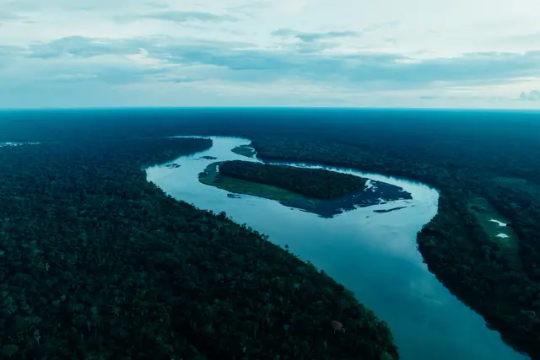
For more than 40 years, the local Indigenous people, the Achuar, have been advocating to stop oil development, which has ravaged large swaths of the Ecuadorian Amazon. But even as they fought against fossil fuels, gasoline was their only option to light their homes and power the boats tied to their livelihood. This area has the thinnest electric coverage in the country. But now a smattering of solar panels across 12 villages in a couple of Ecuador’s deeply forested eastern provinces are transforming life.
Solar power is shaping how they go about daily life in ways big and small, from how they get to work to how they negotiate their connections to the world beyond the Amazon.
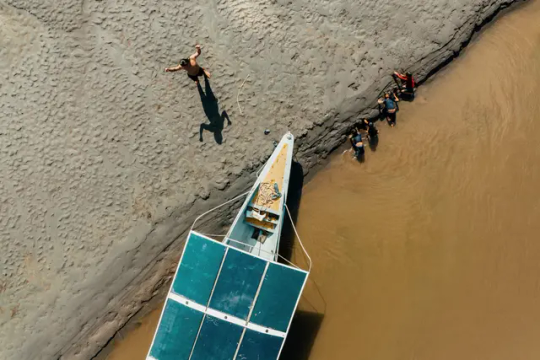
Photo above: A solar-powered electric boat
For generations, young men farmed the land, built huts or left their village to find work outside the jungle. Now solar panels are opening up other options.
In the Kapawi Solar Center, an open structure overlooking the Pastaza River, 20 solar panels power a dozen outlets strapped to bamboo poles. There, technicians such as Óscar Mukucham can charge up and hold workshops on how to install panels.
As a boy, Mukucham, now 23, had visions of solar boats moving through the river. Now he teaches others how to maintain them in the Amazon humidity.

Solar power is also fueling eco-tourism. The Kapawi Ecolodge, a hotel managed by the community, boasts 64 panels that illuminate 10 cabins, the dining room and other hotel facilities for 24 hours a day.
The solar boats are so quiet, they make for ideal vessels for nature tours: They don’t scare away dolphins or birds.

For Canelos, the lamps and panels are enabling a bigger vision: powering the Amazon without scarring it with roads and poles. Solar energy connects them to the world beyond their home, while preserving the ancient traditions that have sprouted from its rich rainforest floor.
“We cannot talk about the fight against extractive activities if we are consuming fuel,” he said. “Just as the sun makes life possible on the planet, it also allows the Achuar to keep their culture alive.”

Source
#ecuador#amazon river#amazon basin#rural#solar power#solar power boats#solar farms#clean energy#transformation#latin america#indigenous peoples
18 notes
·
View notes
Text

Percy Fawcett poses in a 1911 photograph. Photograph Bridgman/ACI
The Man Who Died Searching For The Lost City of Z
In 1925, Explorer and Surveyor Percy Fawcett Disappeared In The Amazon Basin Looking For An Ancient Civilization. Although He Was Inspired By Questionable Sources, We Now Know If His Search was in Vain.
— By Jordi Canal-Soler | June 13, 2024
When the Spanish first ventured into the Amazon Basin in the 1540s, they recorded Indigenous accounts of a lost city of fantastic wealth that they called El Dorado (“the golden”). Over the centuries, many vain attempts were made to locate a lost civilization in the Amazon rainforest.
The last significant attempt to find such a culture was undertaken by British explorer Percy Fawcett. Between 1906 and 1924, Fawcett made seven expeditions across the Amazon Basin, concluding with his doomed quest to find the city he called Z. Fawcett was inspired by his extensive reading of historical sources, including a mysterious document known as Manuscript 512.
A man of extraordinary mental and physical stamina, Fawcett was working at a time when the Amazon region was still largely undocumented by Europeans who sought to explore its jungles and waterways, seeking ancient cities and riches. His disappearance during his search for Z in 1925, in the Mato Grosso region of Brazil, continues to intrigue writers and filmmakers.
Yearning To Explore
Percy Harrison Fawcett was born in 1867 in Torquay, Devon, the English county that had produced many famous explorers and mariners, including Francis Drake and Walter Raleigh.
The son of an aristocrat who had lost his fortune, Fawcett described his childhood as lacking in affection. At age 19, he was commissioned as a lieutenant in the Royal Artillery and sent to outposts of the British Empire.

This image was taken by Percy Fawcett on the upper Acre River in Bolivia, near the Brazil border, during an expedition. The region had suffered greatly at the hands of rubber exploiters. Royal Geographical Society/Getty Images
In 1901, Fawcett joined the Royal Geographical Society of London and traveled to Africa as a surveyor in the service of the British state, tasked with gathering military intelligence. In 1906, he was commissioned by the society to lead an expedition to the Amazon.
Arriving in South America was the moment his whole life changed. Setting out from La Paz to map the vast territory on the borderlands of Bolivia and Brazil, Fawcett often faced hostility from Indigenous peoples angered by rubber barons, who had invaded their lands to extract rubber for use in car and train manufacturing.
For nearly a decade he roamed the Amazon Basin, often the first European to record geographical features such as waterfalls. His writing gives a sense of the awe he experienced:


Fawcett’s Last Journey: After completing seven South American mapping expeditions for Britain’s Royal Geographical Society, Percy Fawcett returned in 1925 to search for the lost city of Z. He left from the same camp where his horse died on a previous expedition and was never heard from again. Source: David Grann, The Lost City of Z: A Tale of Deadly Obsession in the Amazon | NGM Staff
————Route of Fawcett’s 1925 Expedition | ++++++ Railroad
Above us rose the Ricardo Franco hills, flat topped and mysterious, their flanks scarred by deep quebradas [ravines]. They stood like a lost world, forested to their tops, and the imagination could picture the last vestiges of an age long vanished.
The outbreak of World War I interrupted this rich period of exploration, forcing him to return to Europe. Although in his 50s, Fawcett was in peak physical condition, and he proved to be an outstanding soldier.
A Mysterious Manuscript
Fawcett could not shake off the allure of South America, however. So, when the war ended, he returned to Brazil, where he would pursue an idea that led him to his last great adventures and, ultimately, his mysterious death.
Although Fawcett often relied on racist tropes and ideas when he wrote of Brazil’s Indigenous peoples, he also made great efforts to understand their customs and languages.
He lamented the effects of colonialist greed on these societies and became convinced that Spanish and Portuguese accounts from the 16th and 17th centuries of complex civilizations in the rainforest may have had merit. Such accounts mention “very large settlements” as well as “fine roadways in the interior.”
One document in particular fascinated Fawcett. Known as Manuscript 512 and written in Portuguese, it is purportedly an account by adventurers and fortune hunters. In 1753, in search of precious metals, the adventurers found a ruined city boasting monumental buildings, roads, and a plaza, in “each corner of which is a spire, in the style of the Romans.”

Mystery Manuscript! The document that partly inspired Fawcett’s search for Z is kept in Brazil’s National Library. Manuscript 512 is considered a forgery by some scholars, although Fawcett was not the only one who believed it was authentic. Explorer Richard Burton was intrigued by it during his travels in Brazil in the 1860s. National Library, Brazil
Scholars are divided about the manuscript’s authenticity. Skeptics consider it a forgery. Brazil achieved independence from Portugal in 1825. It would have been useful for a new, insecure republic to “discover” a document that described ancient civilizations in its territory—akin to the great Maya sites in Central America. Many at the time, however, accepted the manuscript’s authenticity, including Fawcett, already convinced that early accounts of complex civilizations in the rainforest were accurate. He became obsessed with finding such a place.
In Search of Z
Although Fawcett was inspired by Manuscript 512’s claims, he never intended to find the city it described. The settlement in that document lies, supposedly, in Brazil’s northeast. Citing other sources (which he did not name), Fawcett became convinced that a lost civilization existed in the wild, central-western region of Mato Grosso. He named the city Z.
In April 1925, Fawcett set out from Cuiabá to find it, accompanied by his eldest son, Jack, and his son’s best friend, Raleigh Rimell. The last news from them was in a letter Fawcett sent to his wife: “We shall disappear from civilization until next year. Imagine us ... in forests so far untrodden by civilised man.”
And then they really did disappear. Were they killed by animals or people? Several expeditions were launched in an attempt to clarify what happened, including one headed by Peter Fleming, brother of the James Bond creator Ian Fleming. Many of these ventures also ended in tragedy. And none shed any light on what happened to Fawcett.
In 1952, anthropologist Orlando Villas-Bôas announced he had found the bones of the explorer and that Kalapalo Indians had confessed to killing him. Later forensic analysis showed the remains did not belong to Fawcett.

For a decade, Fawcett roamed the Amazon Basin. His writings, which his son compiled in this posthumous 1953 book, give a sense of the awe he experienced.
Fawcett’s story has had an enduring cultural impact. He is one of the inspirations for the character Indiana Jones. (The Walt Disney Company is a majority owner of National Geographic Media.) The English explorer was also the subject of David Grann’s The Lost City of Z: A Tale of Deadly Obsession in the Amazon, the basis for a 2016 feature film. In his book, Grann quotes Kalapalo Indians, who insist they had not killed Fawcett. They had seen the smoke from Fawcett’s camp for a few days until it stopped. They say he likely died at the hands of “hostile” people in territory to the east.
Although the mystery of his last days may never be fully resolved, Fawcett’s quest for a lost city may be at an end. In the decades since his disappearance, exploration of northeastern Mato Grosso has uncovered the remains of large urban settlements, now located in Xingu Indigenous Park. Named Kuhikugu, the complex includes remnants of streets, bridges, and large squares. Modern lidar scans further suggest that between 1,500 and 400 years ago, this part of the Amazon was indeed the site of a large settlement. While Z’s exact identity and location are still a mystery, Fawcett’s hunch about a hidden ancient city in the region seems to have been correct.
#Lost City#Exploration#Explorers#Mysteries#Rainforest#Treasure Hunting#History Magazine#Percy Fawcett#Lost City of Z#Disappearance | 1925 | Explorer 🧭 | Surveyor | Percy Fawcett#Amazon Basin#Ancient Civilization#Mysterious Manuscript#In Search of Z
2 notes
·
View notes
Text
“Evidence for the grinding of red ocher can be found in these layers, suggesting that the practice of painting the walls began with the earliest inhabitants of Serranía La Lindosa."
1 note
·
View note
Text
Terra preta, however, is.
"Soil: The incredible story of what keeps the earth, and us, healthy" - Matthew Evans
1 note
·
View note
Text


by Midjourney AI.
0 notes
Note
Have you done the hoatzin yet? My all time favorite bird 💕
Not yet! Good choice! For those who don't know, these unique birds mostly eat leaves (rare in birds!) and their young have primitive claws. They have been the subject of a lot of scientific attention!

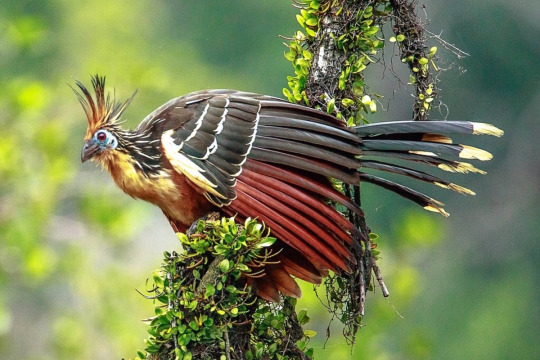
#south american bird#south american birds#hoatzin#Canje pheasant#amazon rainforest#orinoco basin#bird#birds#ornithology#animal polls#poll blog#my polls#animals#polls#tumblr polls
126 notes
·
View notes
Photo

A paradise tanager (Tangara chilensis), a bird found throughout the Amazon Basin.
Image by thibaudaronson via Wikimedia Commons (CC BY-SA 4.0).
#thibaudaroson#photographer#wikimedia commons#paradise tanager#tanager#bird photography#tangara chilensis#amazon basin#nature
34 notes
·
View notes
Photo

Map of the Amazon River drainage basin.
162 notes
·
View notes
Text
CANDIRU. IT’S CALLED A CANDIRU.
#mod post#puppet history#FISH EXPERT HERE. HELLO?#IM SO.#DID HE CONFUSE POPE WITH PIRAIBA AND PIRAIBA WITH CANDIRU?? (BOTH FRESHWATER CATFISHES#WHICH ALSO LIVES IN THE AMAZON BASIN?)
39 notes
·
View notes
Text
Discover Bolivia: Your Ultimate Travel Guide
A Glimpse into Bolivia’s Rich History Bolivia, a landlocked country in South America, boasts a diverse and rich history. It was originally inhabited by ancient civilizations, including the Tiwanaku and the Inca Empire. Spanish conquistadors arrived in the 16th century, leading to centuries of colonial rule. Bolivia gained independence in 1825 but has since experienced a turbulent political…
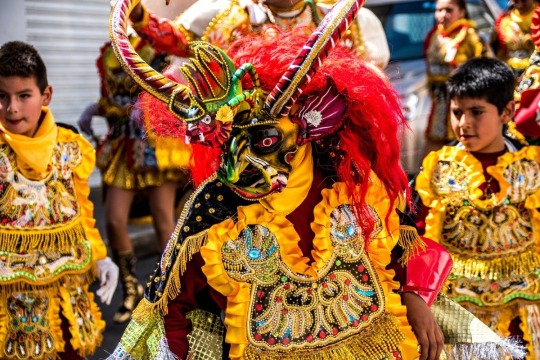
View On WordPress
#a landlocked country in South America#adventure#africa#and activities#and local markets. Adventure Sports: Mountain biking on the infamous Death Road. Wildlife Watching: Spot exotic animals in the Amazon Basin.#and quinoa. Popular dishes include salteñas (empanadas)#and respect local customs. Accommodation Affordability Bolivia offers a range of accommodation options#and sopa de maní (peanut soup). Cultural events and festivals#and sopa de maní for a taste of traditional Bolivian cuisine. 7. Can I use credit cards in Bolivia? Credit cards are widely accepted in majo#and taxis or ride-sharing services are available in cities. Religion Catholicism is the predominant religion#anticuchos#anticuchos (grilled meat skewers)#are also widely spoken. Embark on your Bolivian adventure with this comprehensive guide and immerse yourself in the rich history#be cautious with your belongings#boasts a diverse and rich history. It was originally inhabited by ancient civilizations#but exercise usual precautions. Avoid walking alone at night#but Indigenous beliefs and practices are also widely observed#but it&039;s advisable to carry cash#but it&039;s best to check specific requirements beforehand. 2. What is the best time to visit Bolivia? The dry season from May to October#but many Indigenous languages#but requirements vary by nationality. US citizens#but take usual precautions against petty crime. Avoid demonstrations#carry cash for remote regions and small transactions. Top Places to Visit 1. Salar de Uyuni The world&039;s largest salt flat offers stunni#challenges like rural access and educational quality persist. Universities in major cities offer higher education opportunities. Visa and En#colonial cities#corn#creating a unique cultural blend. Food and Culture Bolivian cuisine is diverse#destinations#Discover Bolivia: Your Ultimate Travel Guide A Glimpse into Bolivia&039;s Rich History Bolivia#especially during the rainy season when it reflects the sky. 2. La Paz The administrative capital
0 notes
Text
The World’s Largest Wetland Is Burning, and Rare Animals Are Dying. (New York Times)

Excerpt from this New York Times story:
Two jaguar cubs burned to death, their small bodies carbonized. Tapirs with raw, bloodied paws had been scalded by smoldering cinders. Nests of unhatched eggs from rare parrots were consumed by flames as tall as trees.
Wildfires are laying waste to Brazil’s Pantanal, the world’s largest tropical wetland and one of the most important biodiversity sanctuaries on the planet.
And the blazes, the worst on record since Brazil started tracking fires in 1998, are taking a deadly toll on wild animals, including at-risk species that scientists have been working for decades to protect.
“We’re watching the biodiversity of the Pantanal disappear into ash,” said Gustavo Figueirôa, a biologist working for SOS Pantanal, a conservation nonprofit. “It’s being burned to a crisp.”
The Pantanal is a maze of rivers, forests and marshlands that sprawl over 68,000 square miles, an area 20 times the size of the Everglades. About 80 percent lies within Brazil, with the rest in Bolivia and Paraguay.
Usually flooded for much of the year, the Pantanal in recent years has been parched by a string of severe droughts that scientists have linked to deforestation and climate change.
Since the start of the year, wildfires have burned over 7,000 square miles, an area the size of New Jersey, in Brazil’s share of the Pantanal.
The wetlands, parts of which are on UNESCO’s list of heritage sites because of their rich biodiversity, are home to the world’s biggest parrot, the highest concentration of caimans and threatened wildlife like the giant otter.
They also harbor animals that have evolved in ways distinctive from others in their species, like larger jaguars that dive into flooded plains to fish for food.
Researchers have counted at least 4,700 plant and animal species in the Pantanal, though they say many more have yet to be discovered by scientists.
“There’s so much we still don’t know,” said Luciana Leite, a biologist and a climate campaigner for the Environmental Justice Foundation. “It’s such a special region.”
But the wildfires, fanned by strong winds and searing temperatures, are threatening this natural laboratory, killing or injuring giant anteaters, lowland tapirs, marsh deer, hyacinth macaws and caimans.
Image
7 notes
·
View notes